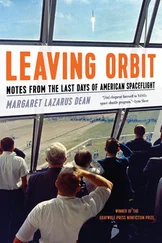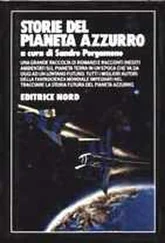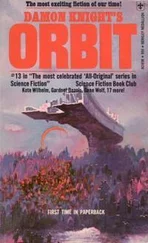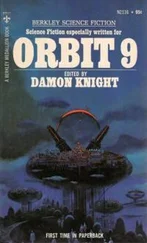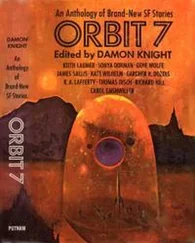Damon Knight - Orbit 16
Здесь есть возможность читать онлайн «Damon Knight - Orbit 16» весь текст электронной книги совершенно бесплатно (целиком полную версию без сокращений). В некоторых случаях можно слушать аудио, скачать через торрент в формате fb2 и присутствует краткое содержание. Год выпуска: 1975, ISBN: 1975, Издательство: Harper & Row, Жанр: Фантастика и фэнтези, на английском языке. Описание произведения, (предисловие) а так же отзывы посетителей доступны на портале библиотеки ЛибКат.
- Название:Orbit 16
- Автор:
- Издательство:Harper & Row
- Жанр:
- Год:1975
- ISBN:0060124377
- Рейтинг книги:4 / 5. Голосов: 1
-
Избранное:Добавить в избранное
- Отзывы:
-
Ваша оценка:
- 80
- 1
- 2
- 3
- 4
- 5
Orbit 16: краткое содержание, описание и аннотация
Предлагаем к чтению аннотацию, описание, краткое содержание или предисловие (зависит от того, что написал сам автор книги «Orbit 16»). Если вы не нашли необходимую информацию о книге — напишите в комментариях, мы постараемся отыскать её.
Orbit 16 — читать онлайн бесплатно полную книгу (весь текст) целиком
Ниже представлен текст книги, разбитый по страницам. Система сохранения места последней прочитанной страницы, позволяет с удобством читать онлайн бесплатно книгу «Orbit 16», без необходимости каждый раз заново искать на чём Вы остановились. Поставьте закладку, и сможете в любой момент перейти на страницу, на которой закончили чтение.
Интервал:
Закладка:
Orbit 16
Edited by Damon Knight
Proofed By MadMaxAU
Copyright © 1975 by Damon Knight. All rights reserved. Printed in the United States of America. No part of this book may be used or reproduced in any manner whatsoever without written permission except in the case of brief quotations embodied in critical articles and reviews. For information address Harper 8c Row, Publishers, Inc., 10 East 53rd Street, New York, N.Y. 10022. Published simultaneously in Canada by Filzhenry 8c Whileside Limited, Toronto.
FIRST EDITION
isbn: 0-06-012437-7
LIBRARY OF CONGRESS CATALOG CARD NUMBER: 74-15875
Designed by C. Linda Dingier
Illustrations by Richard Wilhelm
They Say
At that point, my theoretical work complete, I began to look around for those new forms that my theorizing had led me to demand. And I found them everywhere, hiding under a classification which seems designed to guarantee that they are not “serious literature.” The classification, as you are all aware, is “science fiction,” and it conceals a body of work that is truly astonishing, not just in its “amazing” content but in its range and variety of expression, its present quality and future potential.
—”Stillborn Literature,”
by Robert Scholes, Bulletin
of the Midwest Modern Language
Association , Spring 1974
“Science fiction” is a publisher’s marketing category like “westerns” or “gothics” or “nurse novels”—a packaging definition. When you walk through a supermarket, you can tell the breakfast cereals from the detergents at a glance, even though they come in boxes of roughly the same size and shape. . . . Science fiction writers have complained that serious literary critics automatically ignore their work, no matter what its merits, and sometimes have spun elaborate theories about the snobbishness of the “literary establishment.” But after all, how can a serious, conscientious literary critic sort through the year’s mountain-high pile of tacky-looking science fiction paperbacks to find a few real jewels buried in this heap of literary mediocrity? He knows what a potentially important book looks like as an artifact, as a physical package, because publishers have consistently packaged most of these books in an identifiable style. He may even realize that one soap box out of twenty contains breakfast cereal, but is he going to chomp through nineteen boxes of soap to find it?
—Norman Spinrad, Modern
Science Fiction (Anchor, 1974)
Mr. Bryan: . . . During the NERVA experience, I first came into contact with AEC and the methodology they were using. Obviously, since we were developing a nuclear plant that was going to fly over people’s heads, we had some of the same problems— in some cases even more severe, since we were moving the plant rather than having a stationary source. We spent a considerable amount of money on research into improved reliability techniques when we entered the NERVA program. This was primarily because you could not build a lot of these and test them like we could in the Apollo program to find out where the problems were. During this experience, we would occasionally be analyzing a potential accident or problem and we’d see the similarity between that and what a power plant would have, so we would go to the AEC or to the industry and try to find out what was going on in analyzing this particular sub-problem.
We were very surprised to find a lack of overall knowledge of aerospace techniques within the AEC, and pretty much a lack of interest in developing them. They were having a lot of problems at that time just with normal QC-type functions—quality control; they were just implementing that as a program, which, of course, had been in aerospace for many years and in industry many years before that. But they were having problems implementing that type of program—which, incidentally, is an inspection-after-the-fact type of program whereas reliability is trying to analyze it before the fact. So we didn’t find a lot of help from anything that was going on within the AEC or within the industry. . . .
Since we had spent considerable millions in research to develop some new techniques in the NERVA program for reliability and safety analysis, we were urged by our AEC funding sponsors to contact other AEC people to see what could be salvaged from this program and transferred over to the AEC to use in nuclear power plant analyses. So we made many presentations to AEC personnel on just what we had gone through—what we had learned and the techniques we had developed. We were very disappointed that they elected not to take advantage of this experience—not even to consider, for instance, taking our final documents and reports into a library function to hold until they got to the point in their learning curve where they could use them. What we found was a major concern with their own problems and a very typical resistance to change. ... I personally concluded, from these many contacts and from discussions with people since those contacts, that in general, the AEC is up to ten years behind the times as far as implementing aerospace reliability and safety techniques is concerned, and as a substitute for good analysis, is pushing phony reliability and safety numbers to assure us of just the opposite. . . .
Chairman Warren: Can you explain fault tree analysis?
Mr. Bryan: Yes. A fault tree analysis is where you start with some problem that can occur, some system malfunction, then you start tiering your analysis much like an organizational chart. You start with a box at the top that says you’re going to have a loss-of-coolant accident. You then tier it down to the six or so things that can cause a loss-of-coolant accident, and then for each one of those six things, you analyze the things that could cause each of those six, and you just keep tiering down until you’re down to the nuts and bolts of the system.
The problem in building a fault tree and getting a number out of the fault tree analysis is obvious. You have this huge tree of possible failure mechanisms that all inter-react and all lead into other events for which you have no quantifiable data. The only possible way to quantify each one of these boxes is to have a failure rate for each one. You’d have to have a failure rate for the bolt. You have to have a failure rate for the inter-reactive effect between two adjoining parts. You have to have a failure rate for the seal leaking between two parts. You just have to have failure rates for every point in the analysis, and there just does not exist that type of information. So you end up doing the same thing we’ve always done. Where you can get failure rates, you use them. Where there are industrial failure rates, use them. For instance, maybe you can’t find anything on the particular burst failure mechanics of a high pressure line that you have, so you go to the oil industry and see what they’ve got. Obviously, a pipe used in the oil industry is going to fail much differently from one in a nuclear application, but this is the best you have got so this is what you use.
In other cases, where there is no industrial failure rate, you go back to some qualitative method or some guessing game.
If you’re consistent in the use of these numbers in the fault tree, when you get done you certainly can compare one design against another and say this design is better than the other, if you used a common data base.
Chairman Warren: But only for comparison?
Mr. Bryan: Only for comparison. The absolute value of the number is totally meaningless. There is just no way that number can mean anything in terms of the real-world probability of failure.
—William Bryan of the National
Читать дальшеИнтервал:
Закладка:
Похожие книги на «Orbit 16»
Представляем Вашему вниманию похожие книги на «Orbit 16» списком для выбора. Мы отобрали схожую по названию и смыслу литературу в надежде предоставить читателям больше вариантов отыскать новые, интересные, ещё непрочитанные произведения.
Обсуждение, отзывы о книге «Orbit 16» и просто собственные мнения читателей. Оставьте ваши комментарии, напишите, что Вы думаете о произведении, его смысле или главных героях. Укажите что конкретно понравилось, а что нет, и почему Вы так считаете.

